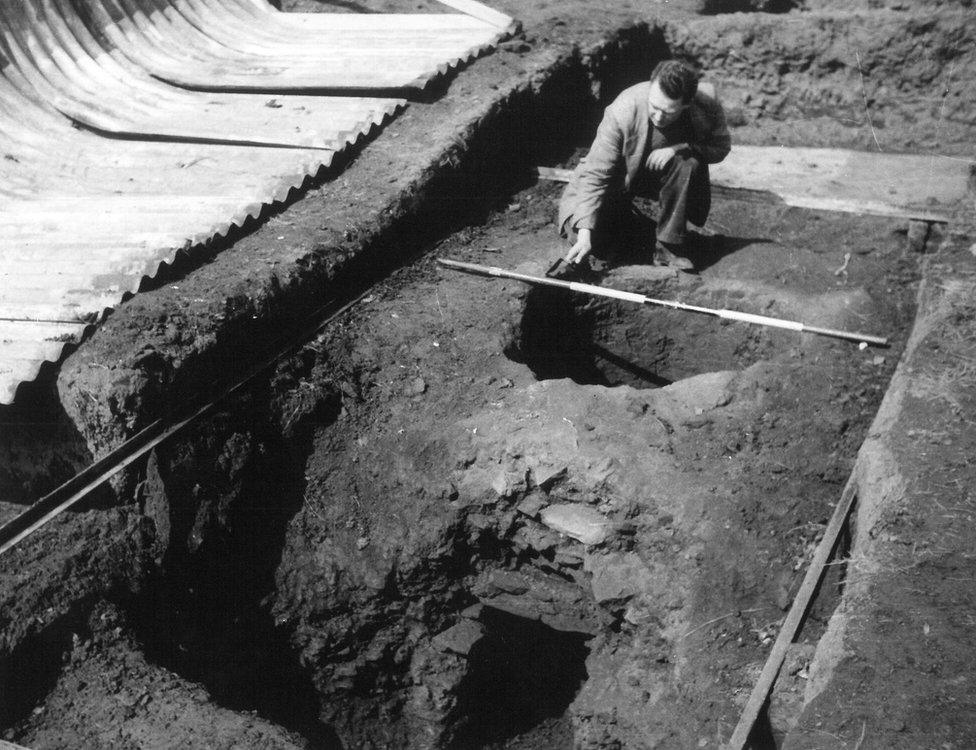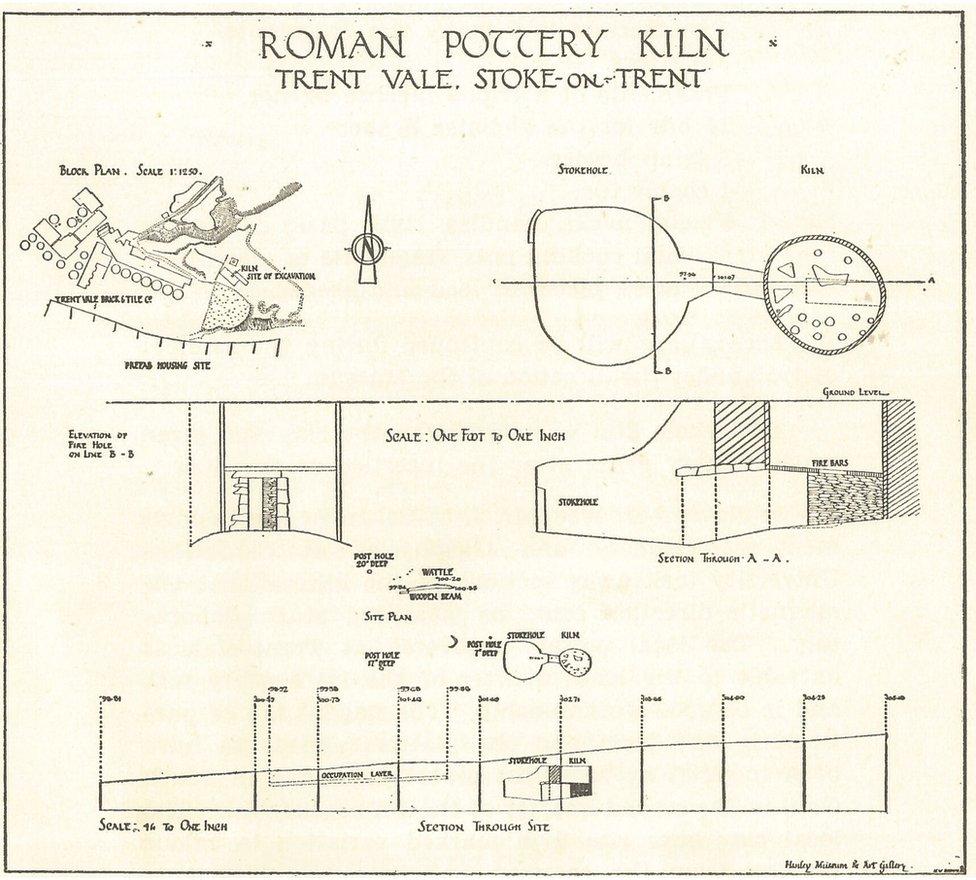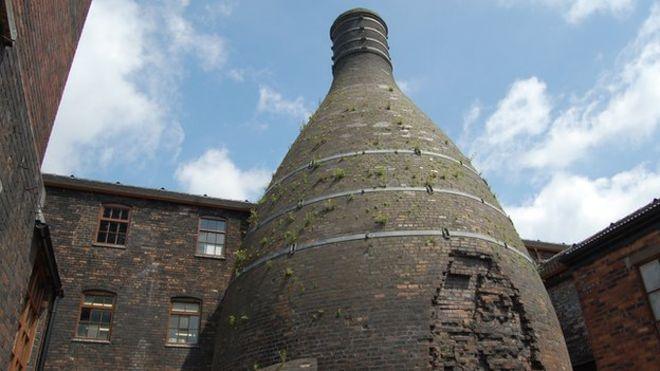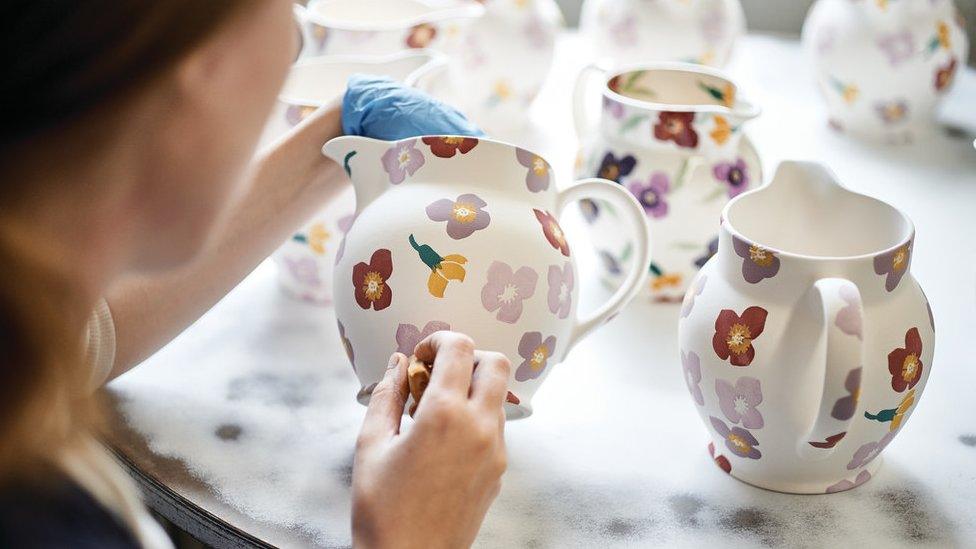Stoke-on-Trent: Did the Romans make pottery there?
- Published

The excavation of a Roman kiln in Trent Vale in 1955
Stoke-on-Trent, also known as the Potteries, has been a production centre for ceramics for 300 years, but does its creative heritage stretch back to Roman times?
Chris from Ipstones got in touch through Your Questions to ask if the Romans made pottery in Stoke-on-Trent and the answer is yes, but what were they making and why?
A kiln dated AD 43-69 was discovered in Trent Vale during excavations between 1955 and 1957. And nearby a potter's workshop and a fort was found.
Pieces of earthenware found inside the kiln are the earliest known in The Potteries.
Then, as now, potters in Stoke were making kitchenware but they also had an eye to the afterlife.
For more archaeology stories see our Pinterest board, external

A 'face pot' used to store cremated remains on display at The Potteries Museum and Art Gallery
"It appears that the pottery was producing flagons, bowls, lamp-holders, cheese presses, jars and kitchenware," said Jonathan Goodwin, a senior archaeologist at Stoke-on-Trent City Council.
Also found was a rare 'face pot', some of which were used to hold cremated remains.
"There is some debate about who or what the faces were supposed to portray - a specific person or a god or perhaps a generic portrait connected to a cult or ritual," said Mr Goodwin.
"It may have been the pottery served the fort.
"Or the fort was there to protect the pottery as an economic investment.
"It could have been a pottery trade centre supplying Roman settlements elsewhere.

A plan drawn in 1956 of where the Roman kiln was found in Trent Vale
"It's close to the date of the Roman invasion, so very early days in Roman Britain.
"It may be that this was wild and unconquered land so they needed to have a military presence here."
But where is the evidence of early Roman settlements?
City councillor Daniel Jellyman said: "Stoke-on-Trent was an engine house of the industrial revolution and our ceramics expertise is world renowned.
"Unfortunately, the industrialisation which made Stoke-on-Trent famous has meant that the small amount of signs that have shown Roman activity in the city are no longer visible."
The area the kiln and potters workshop were found is now home to a Michelin Tyre factory.

The site where the Roman kiln was found is now home to a Michelin tyre factory
Mr Goodwin said the scattering of Roman finds gave "tantalising glimpses" into the Romans' time in Stoke-on-Trent.
A pot filled with 2,461 coins and two silver bracelets, known as the Lightwood Hoard, was uncovered in 1963 buried far from other Roman remains.
Fragments of a Roman road have been found in east Longton and along King Street through Fenton and the city centre to Wolstanton and on to Chesterton. But its exact route is unknown.

The Lightwood Hoard, a pot filled with 2,461 coins and two silver bracelets, was found in an isolated spot
"There is absolutely nothing in terms of a settlement so it seems it was deliberately buried out of the way," said Mr Goodwin.
"The coins are dated three centuries after the kiln and pottery so we know the Romans were here for a couple of hundred years.
"The road may be the artery that links them all together but its precise course through the city we don't know."
Mr Jellyman said: "The evidence as to why the Romans had settlements in the city and what they did here is largely a mystery, but one which we are eager to find out more about."
Mr Goodwin added: "I suspect there is more to tell us about what the Romans were doing here that we will one day find."

Two bracelets found in the Lightwood Hoard which was thought to have been deliberately hidden

This story was inspired by this question sent in by Chris from Ipstones, Staffordshire: "Did the Romans make pottery in Stoke?"
- Published25 June 2016

- Published20 September 2016
